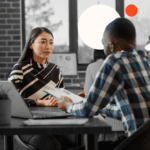Autism Spectrum Disorder is now believed to be primarily hereditary, meaning an individual inherits sets of genes from their parents, contributing to the presentation of their condition.
Environmental factors can also influence the onset and/or presentation of ASD during pregnancy, and early childhood, affecting its severity and characteristics.
Autism (ASD) is classified as a neurodevelopmental disorder.
Autism is a spectrum disorder, meaning it manifests differently in each person. While there are no specific subtypes of ASD, there are many variations in its presentation.
Some individuals may require significant support, while others may live independently. Some may have minimal issues with sensory stimuli, while others may require tools to ease sensory overwhelm.
The spectrum nature of autism is critical to understanding its complexity.
According to DSM-5, one of the most commonly used diagnostic criteria, autism can be categorised into three levels:
Very Substantial Support
Substantial Support
Support
Previously classified as low/high-functioning, outdated labels are now out of favour because they oversimplify and misrepresent the abilities and challenges of autistic individuals.
The focus is now on understanding each individual’s unique profile of strengths and challenges.
Stigmas and misconceptions about Autism have significantly shaped public perception, often leading to misunderstanding and exclusion.
Myth:
“People with autism are awkward.”
Fact:
Autistic individuals may communicate in a different way to the neuro-majority. Awkwardness only arises through a lack of acceptance for said differences, and inflexibility from neurotypical individuals to reach common ground.
Myth:
“Autism means lack of emotion or empathy.”
Fact:
Autistic individuals experience and express emotions differently. Misinterpretation arises from differences in communication styles, not from a lack of feeling or empathy.
Some of the more common symptoms of autism include:

Differences in Social Interaction:

Repetitive Behaviours:
can refer to physical actions, e.g. stimming, or daily routines and personal interests. Some individuals repeat intense focus on specific topics, or insist on consistency, stability and routines to provide predictability and comfort.

Sensory Processing Differences

Developmental Differences
Autism can include delays in language or motor development. The developmental differences seen are often positive differences too, including advanced skills in areas such as memory, reading or mathematics.
ASD’s impact goes beyond observed behaviours, affecting internal processing, perception, and experiences of the world. This includes emotional experiences, which can be intense and complex, requiring supportive understanding from others.
The increase in Autism diagnoses reflects improved awareness and diagnostic criteria but also highlights the need for a more accessible and balanced assessment process. The gender gap in diagnosis, with males more frequently diagnosed than females, also may point to a diagnostic process that overlooks how ASD presents differently across genders.






